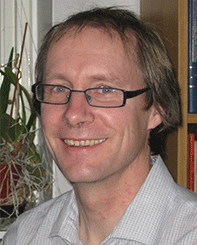This is the third webinar in the BioExcel Virtual Workshop on Best Practices in QM/MM Simulation of Biomolecular Systems.
Title: Obtaining accurate structures and energies with QM/MM
Speaker: Prof. Ulf Ryde
Date: Thursday 26 November, 2020
Time: 14:00 CET
Register
Abstract
In this webinar, I will discuss our approach to performing QM/MM calculations [1, 2], emphasizing three aspects of QM/MM calculations we have developed in our group.
The first is the combination of QM/MM calculations with experimental raw data in the form of X-ray or neutron crystallography, NMR or EXAFS measurements [3–6]. This has turned out to be a powerful approach to improve structures, determine what is really seen in the structures and settle protonation and oxidation states [7–10].
The second is the bigQM approach, in which we try to converge the energies with respect to the size of the QM system by performing single-point energy calculations including all residues within 4.5–6 Å of a minimal QM system, all buried charges in the protein and moving cut bonds at least three residues away from the active site, in total typically ~1000 atoms [11, 12].
The third is to calculate QM/MM free energies without actually performing QM/MM molecular dynamics simulations with the reference-potential approach [13, 14].
Presenter

Prof. Ulf Ryde
Lund University
Ulf Ryde received his Ph.D. in biochemistry from Lund University, Sweden, under the supervision of Prof. G. Pettersson in 1991. He then moved into the field of theoretical chemistry at the same university as a postdoctoral fellow of Prof. Björn Roos. He became a docent in 1996 and a full professor in 2004. From 2001 to 2007 he had a senior research position at the Swedish Research Council. He has published ~270 papers. He studies the structure and function of proteins, in particular metalloproteins, such as blue copper proteins, heme enzymes, vitamin B12 enzymes, hydrogenases, multicopper oxidases and nitrogenase. He has developed QM/MM methods for an accurate treatment of environmental effects, e.g., using accurate MM force fields with multipole expansions and anisotropic polarization, and combinations of QM/MM with free-energy methods or experimental approaches, such as X-ray crystallography, NMR, and extended X-ray absorption fine structure (EXAFS) spectroscopy. He also studies and develops methods to calculate ligand-binding affinities, in particular with free-energy simulations, as well as various combinations of MM and QM methods.
Register for webinar
Registration URL: https://attendee.gotowebinar.com/register/1211535780899980560
You will then receive an email with details of how you can connect to the webinar.
References
[1] Ryde U (2016) QM/MM Calculations on Proteins. Methods Enzymol 577:119–158. https://doi.org/10.1016/bs.mie.2016.05.014[2] Cao L, Ryde U (2018) On the difference between additive and subtractive QM/MM calculations. Front Chem 6:89. https://doi.org/10.3389/fchem.2018.00089
[3] Ryde U, Olsen L, Nilsson K (2002) Quantum chemical geometry optimizations in proteins using crystallographic raw data. J Comput Chem 23:1058–1070. https://doi.org/10.1002/jcc.10093
[4] Hsiao Y, Drakenberg T, Ryde U (2005) NMR structure determination of proteins supplemented by quantum chemical calculations: Detailed structure of the Ca2+ sites in the EGF34 fragment of protein S. J Biomol NMR 31:97–114. https://doi.org/10.1007/s10858-004-6729-7
[5] Hsiao Y, Tao Y, Shokes JE, et al (2006) EXAFS structure refinement supplemented by computational chemistry. Phys Rev B 74:214101. https://doi.org/10.10.1103/PhysRevB.74.214101
[6] Caldararu O, Manzoni F, Oksanen E, et al (2019) Refinement of protein structures using a combination of quantum-mechanical calculations with neutron and X-ray crystallographic data. Acta Crystallogr Sect D Biol Crystallogr 75:368–380
[7] Ryde U, Nilsson K (2003) Quantum Chemistry Can Locally Improve Protein Crystal Structures. J Am Chem Soc 125:14232–14233. https://doi.org/10.1021/ja0365328
[8] Nilsson K, Ryde U (2004) Protonation status of metal-bound ligands can be determined by quantum refinement. J Inorg Biochem 98:1539–1546. https://doi.org/10.1016/j.jinorgbio.2004.06.006
[9] Söderhjelm P, Ryde U (2006) Combined computational and crystallographic study of the oxidised states of [NiFe] hydrogenase. J Mol Struct THEOCHEM 770:199–219. https://doi.org/10.1016/j.theochem.2006.06.008
[10] Cao L, Caldararu O, Rosenzweig AC, Ryde U (2018) Quantum Refinement Does Not Support Dinuclear Copper Sites in Crystal Structures of Particulate Methane Monooxygenase. Angew Chemie – Int Ed 57:162–166. https://doi.org/10.1002/anie.201708977
[11] Hu L, Söderhjelm P, Ryde U (2013) Accurate reaction energies in proteins obtained by combining QM/MM and large QM calculations. J Chem Theory Comput 9:640–649. https://doi.org/10.1021/ct3005003
[12] Sumner S, Söderhjelm P, Ryde U (2013) Effect of Geometry Optimizations on QM-Cluster and QM/MM Studies of Reaction Energies in Proteins. J Chem Theory Comput 9:4205–4214. https://doi.org/10.1021/ct400339c
[13] Rod TH, Ryde U (2005) Accurate QM/MM free energy calculations of enzyme reactions: Methylation by catechol O-methyltransferase. J Chem Theory Comput 1:1240–1251. https://doi.org/10.1021/ct0501102
[14] Olsson MA, Ryde U (2017) Comparison of QM/MM Methods To Obtain Ligand-Binding Free Energies. J Chem Theory Comput 13:2245–2253. https://doi.org/10.1021/acs.jctc.6b01217
